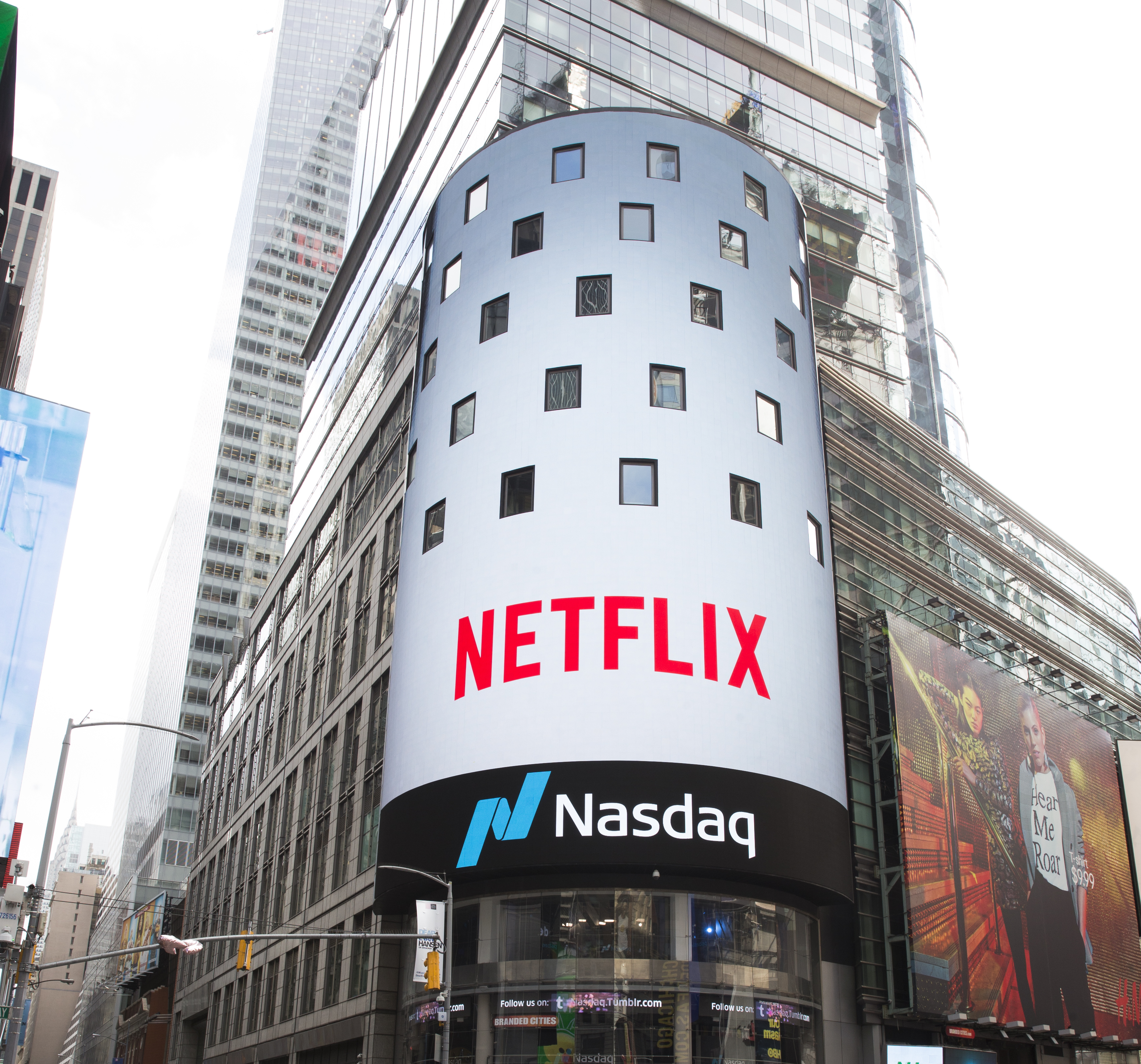Netflix Dangles a Shiny Distraction, While HBO Max Scours the Couch for Loose Quarters (Earnings Preview)
Netflix kicks off what promises to be a brutal Q2 earnings cycle for the major SVODs on Tuesday. And the CEOs are looking for ways to soften the blows

When you can’t get adds anymore, you go looking for ads, at least if you’re Netflix. And this week, we’ll hear how well the chase for the latter is going amid what’s likely to be a disheartening lack of success with the former.
And if you already have the adds and the ads, like HBO Max, and you still don’t have enough to cover that humongous pile o’ debt on your balance sheet, you start to reconsider even the smart decisions of your predecessor.
It’s that kind of season for even the biggest and most successful streaming companies out there, as they start rifling the couch cushions for quarters among other potentially lucrative revenue generators. It’s part of what will make this week a most intriguing one to watch.
Netflix, of course, got a jump on its promised ad pivot last week, announcing that it has chosen Microsoft to be besties in the ad wars. On Tuesday, Netflix will confirm how close to miserable it was in forecasting it would lose at least 2 million subscribers this quarter. Some analysts are betting the losses are even worse.
Advertising is supposed to fix a lot of that. It will give cost-conscious consumers a lower-priced alternative, reduce churn (and, alas, engagement), and generate even more data. Most importantly for both Netflix and the investor/analyst community barking at it, an ad-supported tier will create new revenue at a time when ARPU is an increasingly vital metric.
Microsoft is a formidable technology partner, worth almost $2 trillion and with a huge presence in cloud computing, enterprise software, video games and much else. And Netflix certainly needs help to spin up an ad-supported tier by year’s end, as promised amid April’s disastrous Q1 earnings call.
And yet, this is all kind of weird timing, announcing your ad sales partner before you’ve even, you know, hired an ad sales chief to actually build the thing. Worse, for all that Microsoft has to offer, it’s not quite set up yet to deliver that ad stack.
NEXT TV NEWSLETTER
The smarter way to stay on top of the streaming and OTT industry. Sign up below.
It just picked up supply-side ad platform Xandr in the ongoing AT&T media fire sale for something around $1 billion. That means Microsoft has some serious stackin’ to do if it’s to provide Netflix with a working global ad solution within (consults calendar and toes) five-and-a-half months.
“It’s very early days and we have much to work through,” COO Greg Peters said.
Yes, indeed-y.
Needham’s noted Netflix watcher (and senior analyst) Laura Martin had a more pungent explanation for the early announcement: it’s going to be a really bad earnings call. Netflix needed to dangle something to keep share prices from plunging even further below the 69% collapse they’ve seen so far in 2022.
Realistically, Martin suggested, a Microsoft-supported ad tier might not arrive until late 2023. That would be (again consults calendar and toes) about a year, and a couple of hundred billion dollars in market capitalization, late for Netflix’s short-term needs. So if that’s the case, just how bad is this earnings announcement going to be?
To further spice up her comments, Martin suggested a “hidden agenda” might be lurking behind Tuesday’s distractions.
Microsoft is, for instance, the lone contender to build Netflix’s ad services that also could a) afford to buy the streaming giant; and b) get the deal past regulators.
"It could be that Netflix is looking for an exit,” Martin said. “Netflix is trying to get closer to Microsoft in hopes that, after Microsoft digests its Activision acquisition, it turns and buys Netflix next.”
It’s certainly true that Microsoft has some digestin’ to do before it gets to the ad stackin’, as it pushes for government approval of its $69 billion purchase of Activision-Blizzard. Unlike Elon Musk and Twitter, this is a tech deal both sides want, as do activists and investors hoping to extract deeply problematic Activision CEO Bobby Kotick from his decades-long sinecure.
That deal is hugely additive for one of Microsoft’s biggest areas of leadership: the $160 billion video game sector, where Microsoft already owns the dominant PC gaming operating system and one of the big console platforms.
It also has a terrific subscription gaming platform, with Xbox Game Pass, and owns more than two-dozen game development studios, led by the 2020 acquisition (Microsoft seems to be doing a lot of acquiring lately) of the publisher behind Elder Scrolls, Fallout, and Doom.
Also, Netflix founder and Co-CEO Reed Hastings spent five years on the Microsoft board, though he left in 2012, two years before Satya Nadella took over as CEO.
Now, wouldn’t Netflix look nifty bundled up with that collection of big gaming IP? It’s already building its own game division, but a deeper deal or even an acquisition would increase customer engagement for both sides’ subscription offerings, while also creating a potentially useful pipeline of games-to-video and vice versa.
Martin is, as I like to say, solving for X.
She’s trying to figure out an unknown component of an equation that otherwise doesn’t add up. Maybe it’s just a Tuesday-deep diversion.
Or maybe it’s the golden parachute Hastings needs here in his early 60s, after a quarter century of building the world’s biggest streaming service. Does he have the stomach to restructure the company to do things he always opposed (like advertising), in the hope that will extract his baby from the dismayingly deep pothole in which it’s now stuck?
Goin' 180 ... Again
Meanwhile, talk about besties new and old, HBO Max and parent Warner Bros. Discovery reportedly are reconsidering a relationship with former partner Amazon. That’s a quick boomerang, not even a year after HBO Max walked out, leaving 5 million puzzled subscribers there to figure out where else they might get their fix of Mare of Easttown, Euphoria, Hacks, The Gilded Age, et al.
The reason for the split? HBO Max wanted all that sweet, sweet DTC relationship for itself, including the billing, usage and demographic data. The surprising split seemed to work out for Warner and HBO Max, which saw streaming adds continue to rise at an estimable rate last fall and this spring.
But now, WBD is considering going back, DTC data be damned, Bloomberg reported last week.
The reason is familiar: Need mo’ money. CEO David Zaslav is still whacking budgets and org charts with abandon, trying to navigate a mammoth $55 billion pile of debt.
It’s a mark of the tight times at WBD that getting back in bed with Amazon is looking pretty good again. It’s probably also a mark of Zaslav’s basic cable background.
Functionally speaking, Amazon Channels and similar wholesale platforms are largely indistinguishable from a previous generation’s MVPDs. Both reliably deliver wholesale cash without the hassle of programmers trying to keep actual retail customers happy. ARPU matters here too.
As with Netflix, though, we have to wonder if this is a short-term decision forced by uncomfortable circumstances, or a long-term investment in building a streaming business for the future. Sometimes, you gotta grab the money and run.
David Bloom of Words & Deeds Media is a Santa Monica, Calif.-based writer, podcaster, and consultant focused on the transformative collision of technology, media and entertainment. Bloom is a senior contributor to numerous publications, and producer/host of the Bloom in Tech podcast. He has taught digital media at USC School of Cinematic Arts, and guest lectures regularly at numerous other universities. Bloom formerly worked for Variety, Deadline, Red Herring, and the Los Angeles Daily News, among other publications; was VP of corporate communications at MGM; and was associate dean and chief communications officer at the USC Marshall School of Business. Bloom graduated with honors from the University of Missouri School of Journalism.

